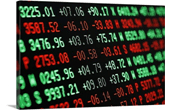Prices

June 1, 2023
HRC Futures: Lower Steel Tags Seen in Near Term
Over the last two weeks, we have seen worsening market sentiment, as evidenced by movement in the futures curve, which sold down as much as $45 per ton in July and $28 per ton in August and September, respectively.

This overall flattening of the curve is most clearly seen in the chart below, with the third and ninth month rolling futures in blue and white, respectively.

We have long been proponents of viewing the forward curve as a tool that provides insight into commodity availability and sentiment rather than as a predictor of price. This view is supported by any “through cycle” analysis, which shows that contracts trade well above and below eventual settlements. With this in mind, we view the third and ninth rolling contract months as the best indicators for when the curve is backwardated (the front of the curve is more expensive than the back), in contango (the front of the curve is less expensive than the back), or flat.
The implication is that backwardation signals a shortage because material today is more valuable than in the future. In contrast, contango signals a surplus, and a flat curve suggests that the market is in equilibrium.
As it currently stands, the ninth-month future (Feb.24) is currently priced at $784 vs. the third month (Aug.23) at $792. This results in a ninth-third month spread of -$8, the least backwardated the curve has been in three months. This spread means the shortage in the physical market that resulted in the dramatic rally in prices is largely resolved, which is supported by the increases in domestic production, recent rising levels of imports, and falling lead times.
The culmination of this clearly shows that lower steel prices are to be expected in the near term. However, as is usually the case, the futures market has already fallen ahead of the spot market, and there is less downside risk as we approach fundamental support levels.

The chart above shows some of the most illustrative plumbing in the HRC future curve. In the top panel in orange, we see the net speculative position, which shows how long or short non-commercial participants (speculators) are in the HRC futures market. The lower panel shows the open interest in white and daily volume in the rolling third-month future. Open interest shows the absolute value of open positions regardless of whether they are long or short, and we use the daily volume of the third-month future because it is broadly viewed as the most liquid on a historical basis.
So, what does this all mean? First, since the end of last year, the speculative positioning has been oscillating in a tight range around the “least short” that we have seen since the beginning of 2021. This implies that there is a more balanced view of the industry than in the last two years. Additionally, volumes in the third-month contract were significantly elevated at the end of February and throughout March, and have meaningfully declined since then. Because speculative positioning did not meaningfully change and open interest remains elevated, this is a clear indication that the adoption of risk management strategies from commercial participants is becoming more embedded within the industry.
Looking forward, the most critical question for the future markets is: where does the spot price find support? A rapid increase in domestic production, overshooting demand, or a severe economic downturn are the most significant remaining downside risks. At the same time, a reluctance to purchase enough operating inventory either domestically or from abroad will leave the domestic market exposed to a higher floor and severe upside risk, much like what was experienced going into this year.
By Daniel Doderer
About Flack Global Metals
In 2010, Flack Global Metals (FGM) was founded with the mission to reinvent how metal is bought and sold. Over 13 years later, the company has evolved into a hybrid organization combining an innovative domestic flat-rolled metals distributor and supply chain manager, a hedging and risk management group supported by the most sophisticated ferrous trading desk in the industry known as Flack Metal Bank (FMB), and an investment platform focused on steel-consuming OEMs called Flack Manufacturing Investments (FMI). Together, these entities deliver certainty and provide optionality to control commodity price risk in the volatile steel industry.






